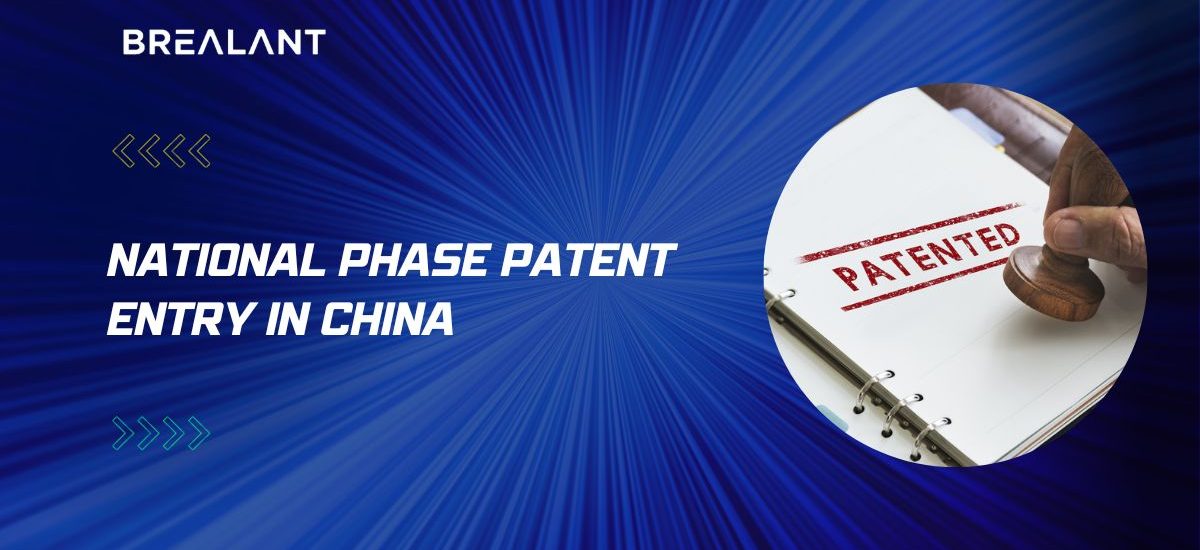The latest development from China is the national phase patent entry system. This new system will speed up the patent process and make it easier for businesses to get patents in China. In order to take advantage of this system, you’ll first need to understand what it is. China is quickly becoming the world’s leading center for patent filing. National Phase Patent Entry, or national phase review, has gained popularity for companies to secure intellectual property rights in China. The process offers an expedited way to protect and enforce patents through the Chinese legal system.
For one time only, a member state of the Patent Cooperation Treaty (PCT) may be used to submit a PCT national phase application to get a patent. While maintaining the unique needs of each nation, this streamlined procedure offers patent protection. Backdating is done to the initial filing date.
Under the national phase patent entry system, patent applications are now processed in four phases: draft patent application, exam procedure, grant of a patent, and invalidation of the patent. Paying Attention to China’s Patent Law Can Mean a Big Advantage for Your Business. The landscape of China’s patent system continues to evolve, which necessitates business owners take steps to protect their IP in China. Businesses that do not properly protect their IP may be disadvantaged when competing in China. A detailed understanding of China’s patent system can help you identify risks and develop an effective IP protection strategy.
This article will provide an overview of the Chinese patent system and highlight key points to consider when protecting your IP in China.
What are the requirements for PCT National Phase Entry?
A National Phase Patent Entry (NPE) is an important event in China patent law that allows inventors who have completed the generic establishment of their inventive activity and obtained Chinese patent applications satisfying certain conditions to apply for a Joint Patent with their foreign counterparts.
Before the 30-month time following the priority date (or 32 months with the extension), CNIPA must receive a translation into Chinese of any documents submitted with a patent application if they were originally filed in another language.
30 months from the priority date is the deadline for filing a patent application in China based on the PCT. For an extra two months, the period is extendable.
In China, patent applications are handled in a national phase, which provides greater security for the applicant and makes it much quicker and easier to get a patent granted. This eliminates the need for multiple rounds of negotiations with multiple Patent Offices worldwide. Foreign applicants who want to establish a Chinese subsidiary or set up a new operation in China should consider pursuing national phase patent protection.
How does this affect businesses?
First and foremost, the draft patent application phase allows for a more rapid filing time. With a shortened timeframe, your company can submit its application sooner rather than later and still have a good chance of obtaining a patent. Secondly, in the exam procedure phase, there are now mandatory visits to national institutes by applicants and their lawyers. This will ensure that all applications meet the necessary quality standards before being sent to the grant of the patent stage.
Lastly, after a patent has been granted, applicants may now file invalidation actions against their patents if they believe they were wrongfully granted. This provides companies with another opportunity to correct any mistakes or irregularities discovered during the prior stages of the law.
National Phase Patent Entry affords companies access to a large population of potential consumers while preserving their competitive edge. With the rapid advancement of technology, businesses need to have a strong intellectual property portfolio to keep up with the competition.
National Phase Patent Entry allows businesses to be globally competitive by securing complex intellectual property rights in one of the world’s fastest-growing economies.
Conclusion
As you can see, taking advantage of China’s national phase patent entry system can benefit your business. By paying close attention to China’s Patent Law and following its guidelines closely, you can easily navigate the process and achieve your desired results. If you are involved in any business activity requiring intellectual property protection, it is important to understand the significance of a National Phase Patent Entry. By filing an NPE, you can protect your valuable intellectual property rights in China and ensure smooth cross-border cooperation between your Chinese and foreign counterparts.
Patenting your innovation or your brand can not only make it renowned but also strengthen its IP security. Make it your next step and get insights about IP security from the best professionals. Brealant is a well-known IP service provider firm that assists with the various aspects of Intellectual Property aspects. Visit the website and learn more about the portfolio of services.




